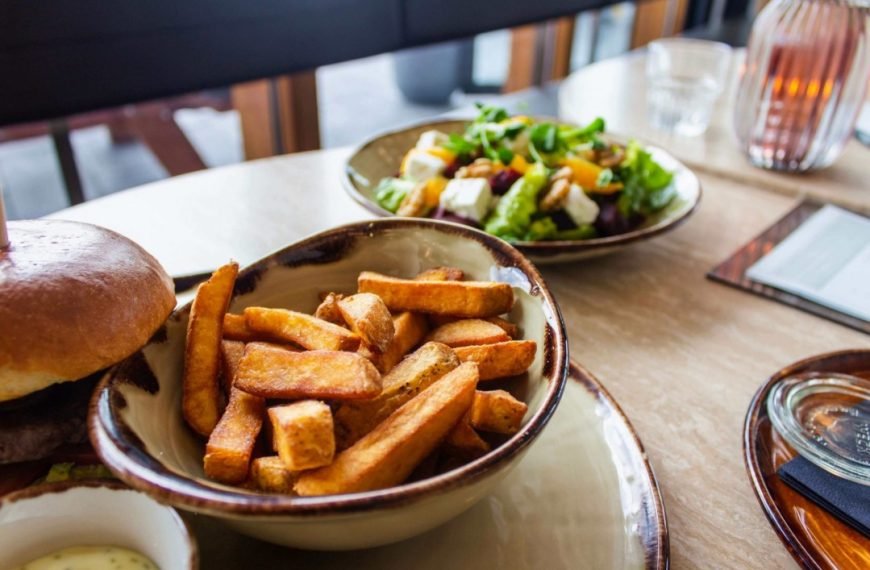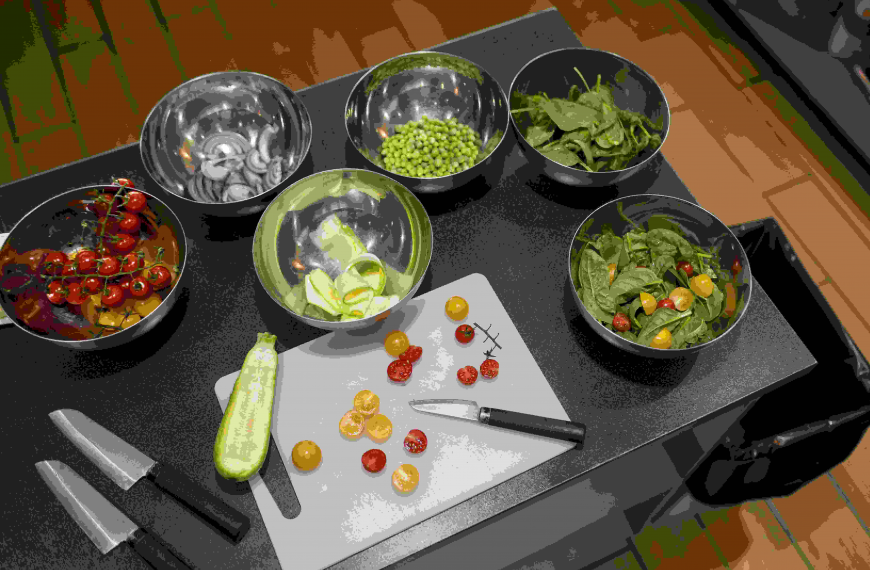Food design is the process of creating food that not only looks appealing but also tastes delicious. It combines elements of art, science, and technology to bring together a perfect balance of aesthetics and flavor in dishes.
Food preparation involves a creative approach to cooking and presenting food that caters to all the senses. This makes it an experience beyond just eating.
So, if you are wondering how food design has revolutionized the culinary world, keep reading!
Interactive Dining Experiences
Food design has transformed the traditional dining experience into an interactive one. Chefs no longer just cook behind closed doors and serve the food on a plate. They are now part of the dining experience. They engage with customers and incorporate theatrical elements into their dishes.
This trend has been adopted by many restaurants, especially in fine dining, to elevate their customers’ experience. The food becomes more than just a meal; it becomes a story, an adventure.
Multi-Sensory Dining
Food design has also brought multi-sensory dining to the forefront. This means that dishes are not just designed to look good on a plate, but they also aim to stimulate all the senses:
- taste
- smell
- touch
- sound
Chefs incorporate different textures, aromas, and sounds into their dishes to create a complete sensory experience for their customers. This takes the dining experience to a whole new level. This makes it more immersive and memorable.
Artistic Plating
One of the most noticeable ways food design has revolutionized the culinary world is through artistic plating. Chefs have taken plating to a whole new level. This helps them create intricate and visually stunning designs on plates.
Food is no longer just served conventionally. It is now a canvas for chefs to showcase their creativity. This not only adds an aesthetic appeal to dishes. It also elevates the overall dining experience.
The use of charcuterie boards, for example, has become a popular trend in food design. These boards allow chefs to present an array of ingredients artistically. This creates a visually appealing and Instagram-worthy dish.
Storytelling Through Food
Food design has also given chefs a platform to tell stories through their dishes. Each dish can have its narrative. This is whether it’s a representation of the chef’s cultural background or a reflection of their journey.
This allows customers to connect with the food on a deeper level. Plus, it adds a sense of meaning to the dining experience. It also allows chefs to showcase their creativity and bring their personal touch to each dish.
Sustainable Food Practices
With the rise of food design, there has also been an increased focus on sustainable practices in the culinary world. Chefs are now more conscious of their ingredients and where they source them from.
Food design encourages chefs to use local and seasonal produce. This helps by reducing their carbon footprint and supporting local communities. It also promotes minimal waste by utilizing all parts of an ingredient to create a dish.
Immersive Dining Environments
Food design has also led to the creation of immersive dining environments. Restaurants now incorporate elements such as lighting, music, and decor to enhance the dining experience.
These immersive environments transport customers into a different world, making them feel like they are part of a story or adventure. It adds an element of surprise and excitement to the dining experience, making it more memorable.
Culinary Innovation
Lastly, food design has sparked culinary innovation by pushing chefs to think outside the box and experiment with new techniques and ingredients. This has resulted in the creation of unique and innovative dishes that continue to surprise and delight customers.
Food design also encourages collaboration between chefs, leading to a fusion of different cuisines and flavors. This constant drive for innovation keeps the culinary world exciting and ever-evolving. Plus, customers get to experience new and exciting dishes on their culinary adventures.
Personalized Dining Experiences
Food design has also allowed for more personalized dining experiences. Chefs can cater to specific dietary restrictions or preferences, creating customized dishes for their customers.
This not only shows a level of care and attention from the chef but also adds an element of surprise for the customer. It allows them to try new flavors and combinations tailored specifically for them.
Moreover, with the advancements in technology, personalized dining experiences have become even more accessible. From online ordering to AI-driven meal recommendations, customers can now have a customized and convenient dining experience.
Cultural Fusion Cuisine
Food design has brought about a fusion of different cuisines and cultures in the culinary world. Chefs are inspired by different flavors and techniques from around the world, resulting in unique and delicious dishes.
This cultural fusion cuisine not only adds diversity to menus but also encourages cultural exchange and understanding through food. It allows customers to experience new flavors and cultures without leaving their city.
Plus, this fusion cuisine is constantly evolving, creating endless possibilities for new and exciting dishes. This keeps the culinary world vibrant and dynamic. This makes it an exciting time for food enthusiasts.
Collaborative Dining Concepts
Food design has also transformed the dining experience into a collaborative one. Restaurants now offer interactive cooking classes and chef’s table experiences, where customers can learn from and interact with chefs.
This not only adds an educational element to the dining experience but also creates a sense of community as people come together over their love for food. Plus, who wouldn’t want to learn from a master chef and then enjoy their creations?
Food Design is Revolutionizing Dining Experiences
Food design has revolutionized the culinary world in countless ways. From interactive and multi-sensory dining to personalized and culturally diverse menus, it has transformed the way we experience food.
Food is no longer just sustenance; it is an art form that engages all our senses and tells stories. With its constant drive for innovation and collaboration, culinary artistry continues to push the boundaries of what is possible in the culinary world.
So next time you sit down for a meal, take a moment to appreciate the design and craftsmanship behind each dish – it’s truly a work of art.













